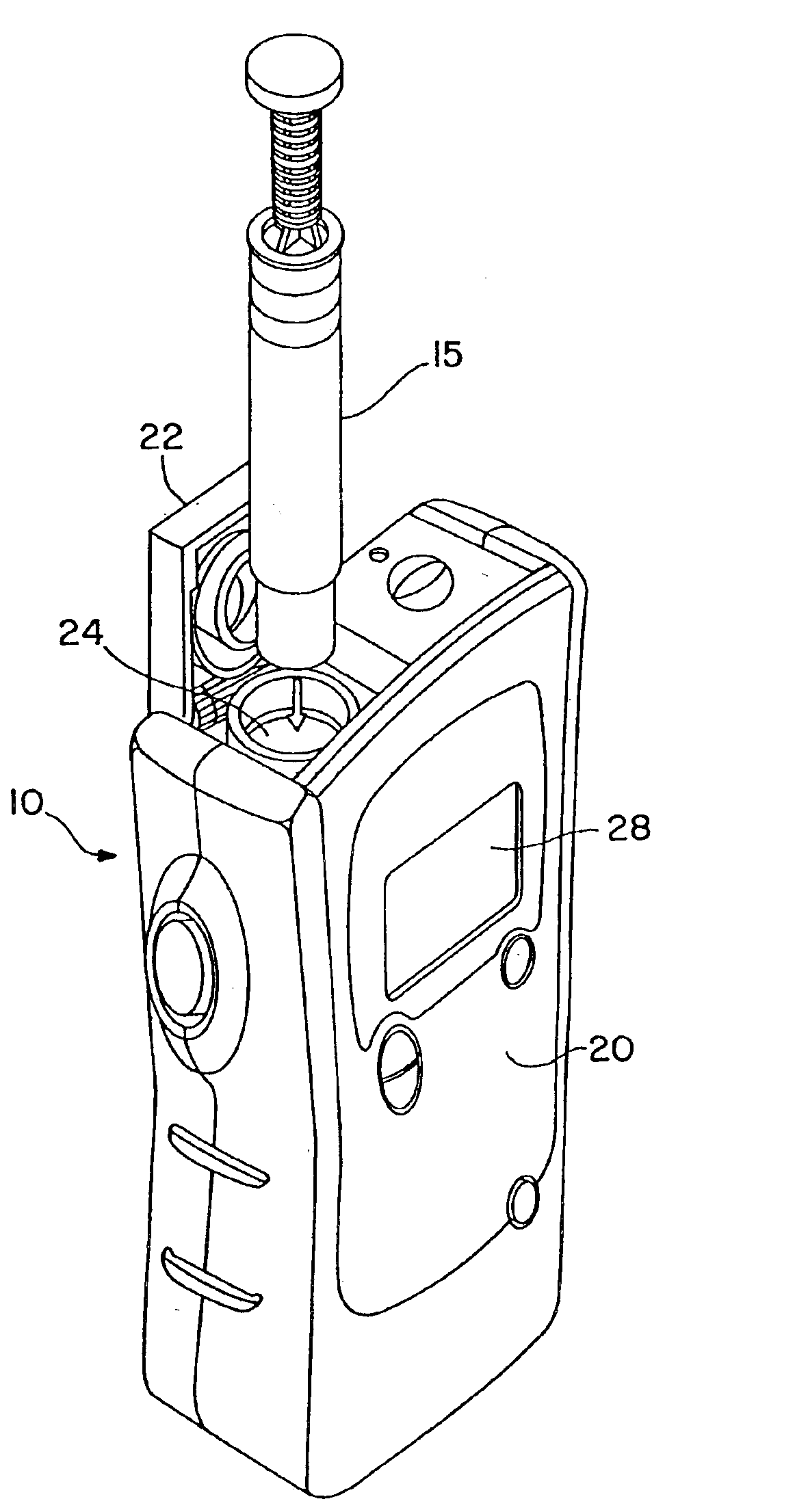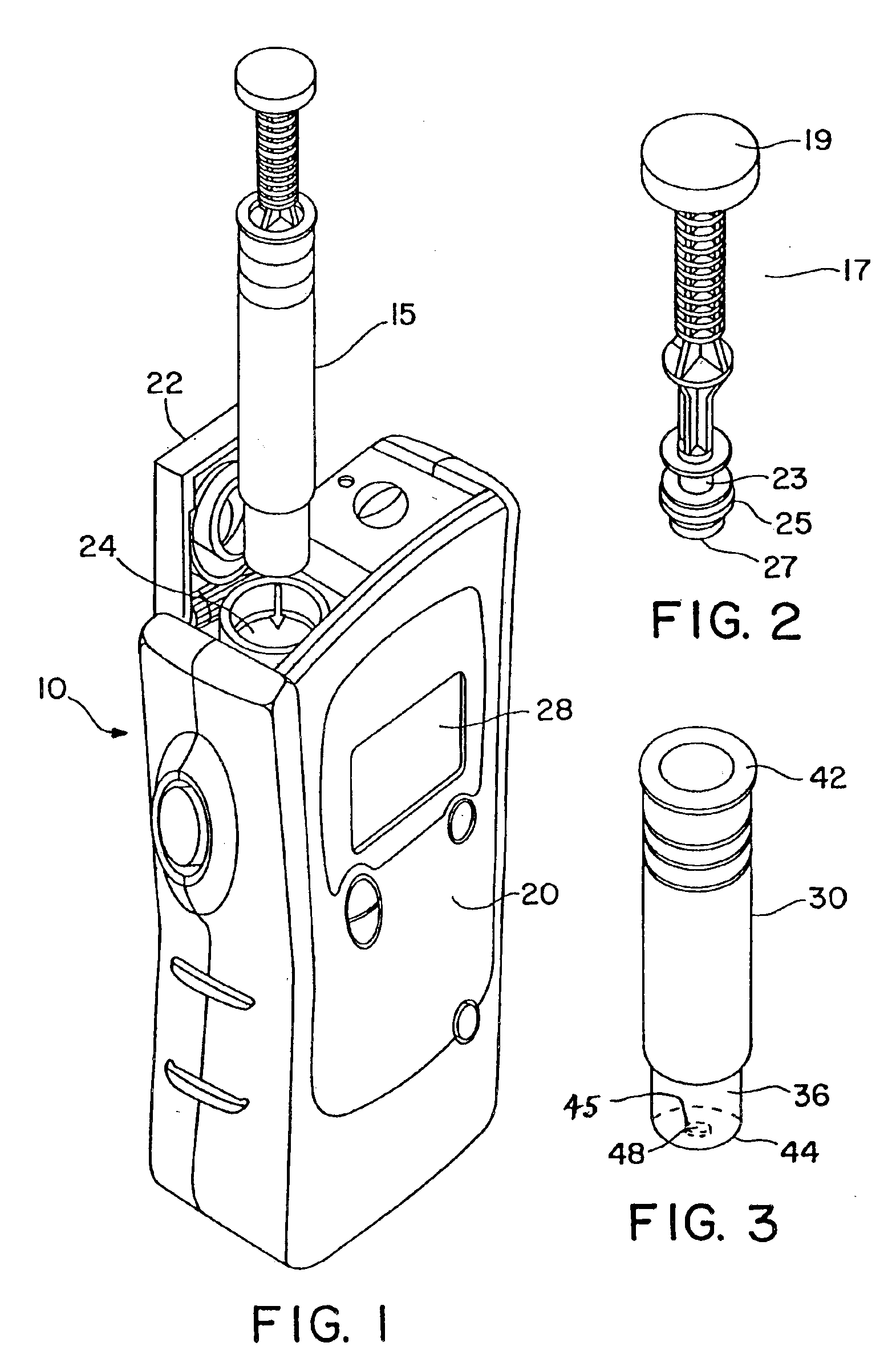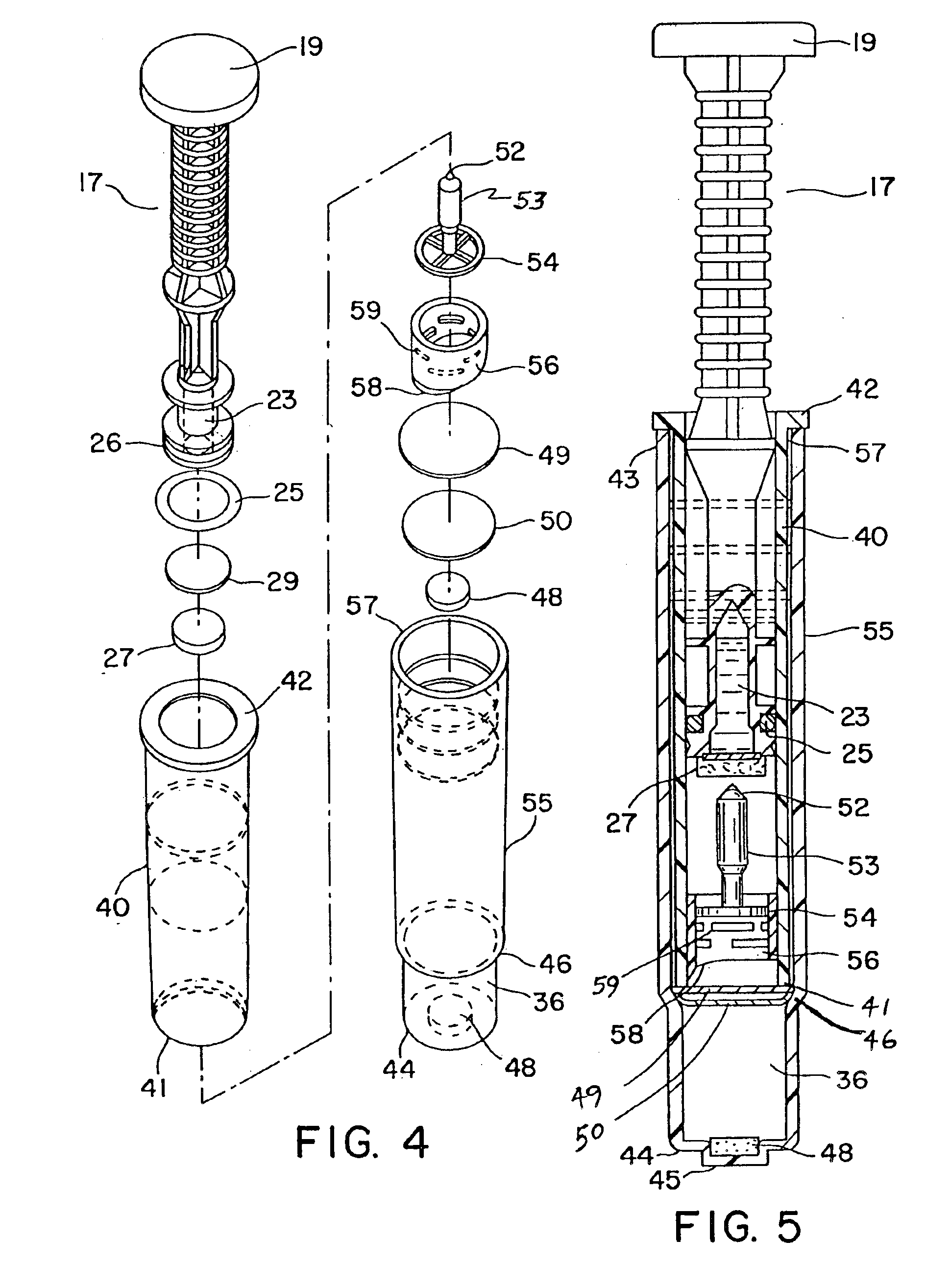During food processing, food can become contaminated with bacteria and then spoil.
Furthermore, such contamination can be spread through contact of food with contaminated surfaces.
Food poisoning can result if food contaminated with pathogenic bacteria, or its toxic products, is ingested without proper cooking.
In addition, spread of disease in hospitals and other facilities often occurs as a result of the passage of infectious microbes on the surface of clothes or equipment.
In light of this potential hazard, it is not enough to simply clean or sanitize a surface and assume it is free from microorganisms such as bacteria.
While the results of bacterial cultures are accurate, they are limited by the time that it takes to incubate the culture, usually on the order of days.
Unfortunately, such prior art methods for detecting bacterial contamination are too cumbersome and time consuming for immediate use by untrained workers.
However, typical bacterial assays based on cell culture techniques cannot provide results within a meaningful time frame.
However, intracellular ATP cannot be detected unless the ATP is first extracted from within the cells.
An additional consideration is the toxicity of the lysing agent, particularly when used on food preparation surfaces.
Although vial systems can produce acceptable results, there are deficiencies.
One significant problem is that the reagent solutions must be used within a short time of their preparation.
If leftover solution is saved for later tests, the reagents will likely degrade and ultimately become ineffective, thus producing no reaction even in the presence of ATP (a false negative result).
This problem is compounded by commercial producers of typical reagents that sell the reagent only in quantities that produce an amount of solution that is greater than that needed for individual tests.
Furthermore, the alternative, dried reagents, can be relatively costly.
Thus, the vial system results in waste of expensive reagents when only an individual test is required.
While pipetting can be highly accurate, it is laborious and time consuming.
Also, if any of the vials or pipettes are not sterile, the biomass contained in them will produce a false positive for the presence of ATP Furthermore, proper pipetting technique requires significant skill and experience, thus making consistent and accurate results difficult to attain without a relatively high degree of expertise on the part of the operator.
Although numerous technologies have evolved in the implementation of all-in-one ATP assay systems, devices available to date have consistently displayed shortcomings rendering them less than ideal for use under the conditions most likely to be encountered.
However, the disclosed apparatus and methods still suffer from considerable complexity and limited application, as the actual luminometric measurements giving rise to a biomass determination are contemplated to be performed on a laboratory-scale apparatus.
Thus, the complexity of the process and the need for a full-scale laboratory apparatus imposes a requirement for operator skill and sophisticated equipment that renders the disclosed invention unsuitable for rapid, in situ analyses by untrained personnel in less-than-ideal field conditions.
Thus, the disclosed invention, due to the relative complexity of the multi-compartment sampling device using reagents in solution form, along with the need for a relatively sophisticated measurement instrument is not ideally suited for use by untrained operators in the relatively harsh conditions of a field environment.
However, as with WO 95 / 25948, the application does not disclose details of the luminescence measuring device, although the implication is clear that the device would be a laboratory-scale instrument, perhaps adapted to receive the disclosed sampling device.
Although offering a number of advantages over prior art methods and devices, the invention disclosed in this reference still suffers from the drawbacks of a somewhat complex internal structure to the sampling device, and the extensive handling required to remove the microtube from the bottom of the device and seal the same before being transported to a separate desktop analytical device for actual measurement.
Principal among these is the relative complexity of the process by which a sample swab interacts with the reagents necessary to develop an analytical signal.
At this point, the sampling device may be inserted into an analytical instrument for a determination of the luminescence from the sample, but the reference does not disclose details on the type or construction of such a device.
As with other examples of the prior art, this reference exhibits shortcomings in overall design that render it incapable of meeting the ideal criteria for such a device articulated herein.
For example, the device is somewhat complex in design and manufacture and requires the use of glass ampoules as reagent reservoirs.
Given the likely storage and use of such a sampling device in the field, such constructions are less than ideal.
Although the disclosed device is presumably capable of use under field conditions, the complex process of the sequential spraying of specific amounts of different reagents, the need to utilize a liquid sample and the requirement for a light-tight environment imposed by a photographic film detector all represent significant departures from an ideal configuration or method of use.
However, the relatively short time over which emission of measurable luminescence will occur from the sample is such that the time between rupture of the reservoir seal to transfer of the resulting solution to an analytical instrument must be rather short.
Thus, although the sampling device may be used in the field, there must necessarily be s substantial passage of time from collection of a sample in the filed to receipt of actual analytical results.
It would be apparent to one of skill in the relevant art that such an apparatus and method involves considerably more complexity than would be suitable for use under field conditions by an unskilled operator.
Thus, the teachings of the reference fall far short of attaining the goals of an ideal apparatus or method for hygiene monitoring.
Although the disclosed devices offer a number of improvements over the prior art sampling and detection devices, the use of the sampling device remains somewhat complex in the requirement for application of a carrier fluid to the sampling device in order to effect contact of the sample with the necessary chemiluminescent reagents.
 Login to View More
Login to View More 


